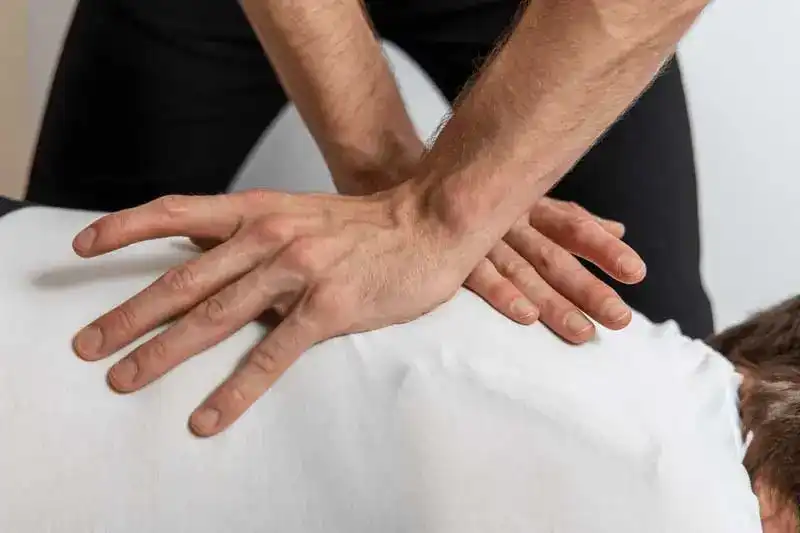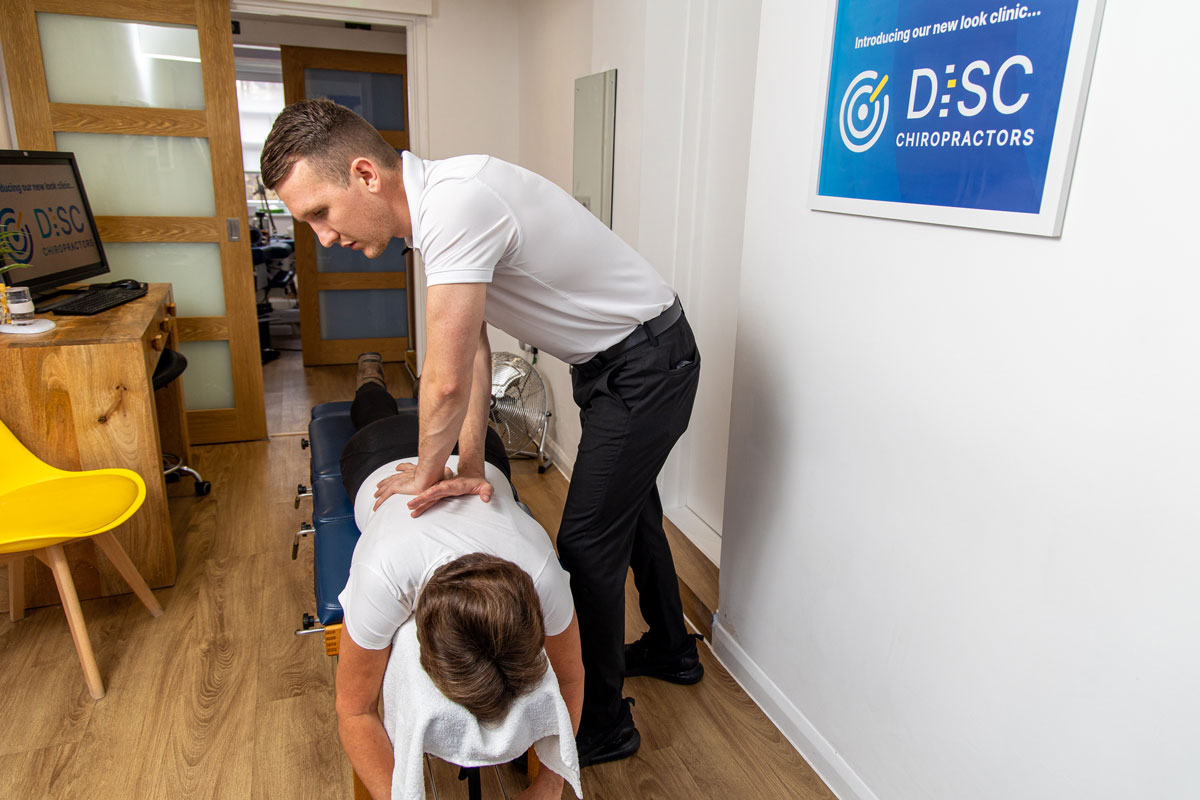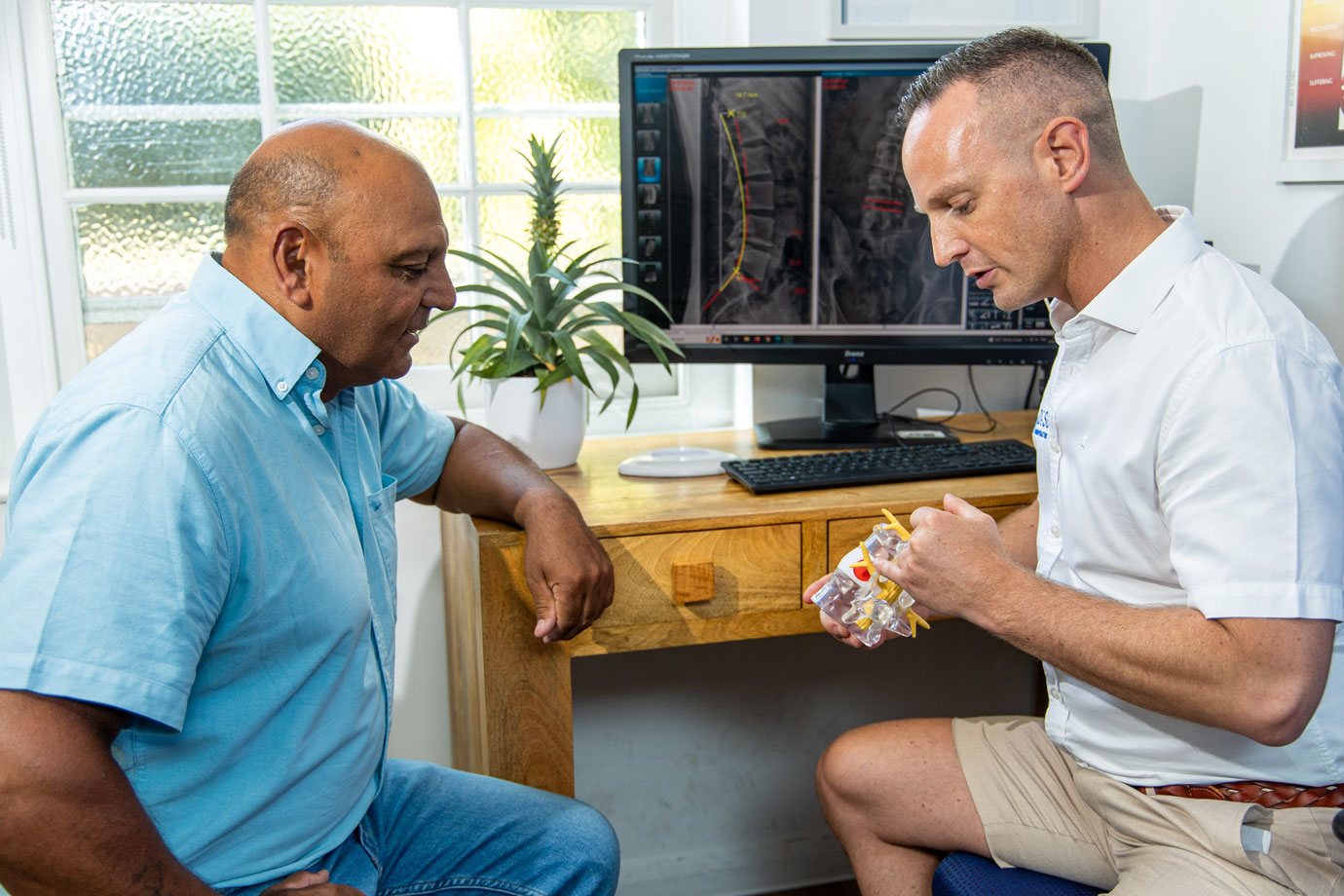Fascial Release
Book NowThe DISC Chiropractors: Unlocking the Potential of Fascial Release
Let’s delve into the fascinating world of fascial release and explore its essential role within chiropractic care.
Fascia, often referred to as the body’s connective tissue, plays a crucial role in supporting and protecting muscles, bones, and organs. It is especially significant to chiropractors like us because it forms the outer layers of muscles. Essentially if you think of a muscle to be a bit like a sausage, the meat represents muscle fibres, and the skin would be the fascia.
If a muscle gets damaged or stressed it can heal quite quickly, think about how long a post-gym pain lasts 2-3 days. Yet if that damage is extensive or chronic in nature and it affects the out layer, the fascia then pain can be much more prolonged in its nature.
Generally, when you feel a knot in the muscle it’s not actually the muscle fibres you are feeling but in fact the fascia, these are also known as “Trigger Points”.


Fascial release is a technique aimed at breaking up tension and adhesions within this connective tissue, promoting better movement and overall wellness. Therefore, fascial release offers a plethora of benefits within chiropractic care. By reducing pain and tension, it allows the body to heal naturally. Additionally, it improves mobility and flexibility, enabling patients to regain lost range of motion and enjoy an active lifestyle.


At The DISC Chiropractors, we employ a variety of techniques for effective fascial release.
Myofascial release involves sustained pressure to release tension, while a hands-on Active Release Technique (ART) combines movement with pressure for targeted relief, we also utilize Instrument-Assisted Soft Tissue Mobilization (IASTM) to address specific problem areas as well as cupping massage techniques.
Fascial release is particularly beneficial for patients with chronic or stubborn pain patterns that involve a high degree of scar tissue build up. By addressing the root cause of pain and discomfort, this technique can significantly improve these conditions.
The techniques we use at DISC, Surbiton are additionally beneficial for stimulating blood flow and lymphatic drainage, aiding in tissue healing, reducing inflammation, and promoting overall tissue health. Fascial Release can accelerate the healing process by targeting soft tissue dysfunction, and facilitating the remodelling of scar tissue, making it more pliable and less restrictive. This in turn allows for quicker recovery from injuries and overuse conditions.
Our approach to fascial release starts with a comprehensive assessment and diagnosis. From there, our skilled chiropractors create personalized treatment plans, initially aimed at targeting the immediate source of pain. Combining fascial into a treatment plan normally occurs in the secondary phases of care when pain and inflammation are reduced, and we are looking to identify an support the underlying dysfunctions that have create the patient’s condition in the first place. This holistic approach enhances the effectiveness of the treatment as well as the longevity of improvement.
FAQS (FREQUENTLY ASKED QUESTIONS)
What does fascial release feel like?
How long does it take to see results?
Is fascial release suitable for everyone?
Fascial release is safe for most individuals. However, it is essential to consult with a qualified chiropractor to determine the best course of action for your specific needs.
Is it normal to experience redness or bruising following fascial release.
Yes, absolutely. Often fascial release will bring to the surface of the skin the broken-down scar tissue which includes old blood cells. A “no holds barred” session can look pretty bruised afterwards but generally wont feel tender to touch as no fresh tissue damage has occurred.
Hopefully it goes without saying you are always welcome to discuss prior to treatment, just how much bruising you are comfortable with if you decide to embark on this soft tissue work, with our experienced clinicians.
Contact Us
If you would like to find out what we could do to help you, please click the button below to book a thorough consultation to evaluate your case.
